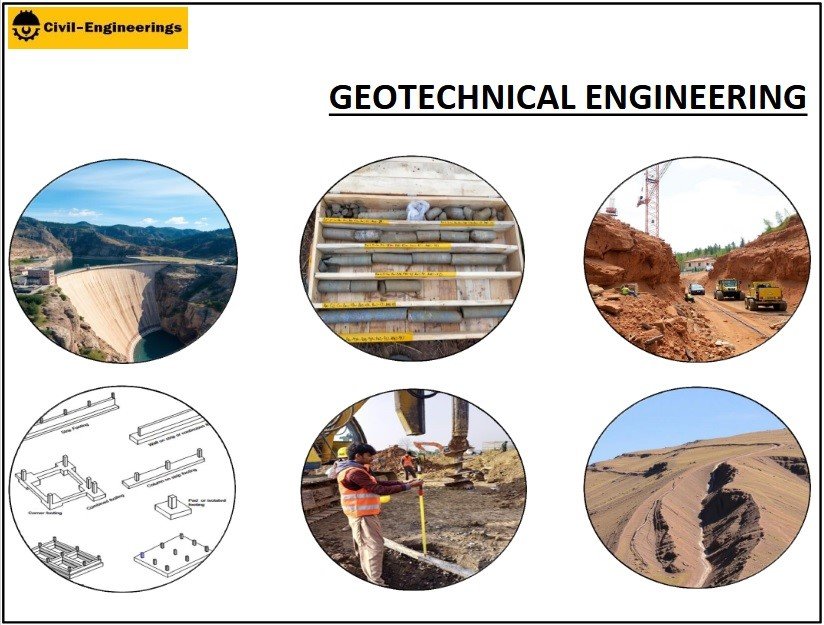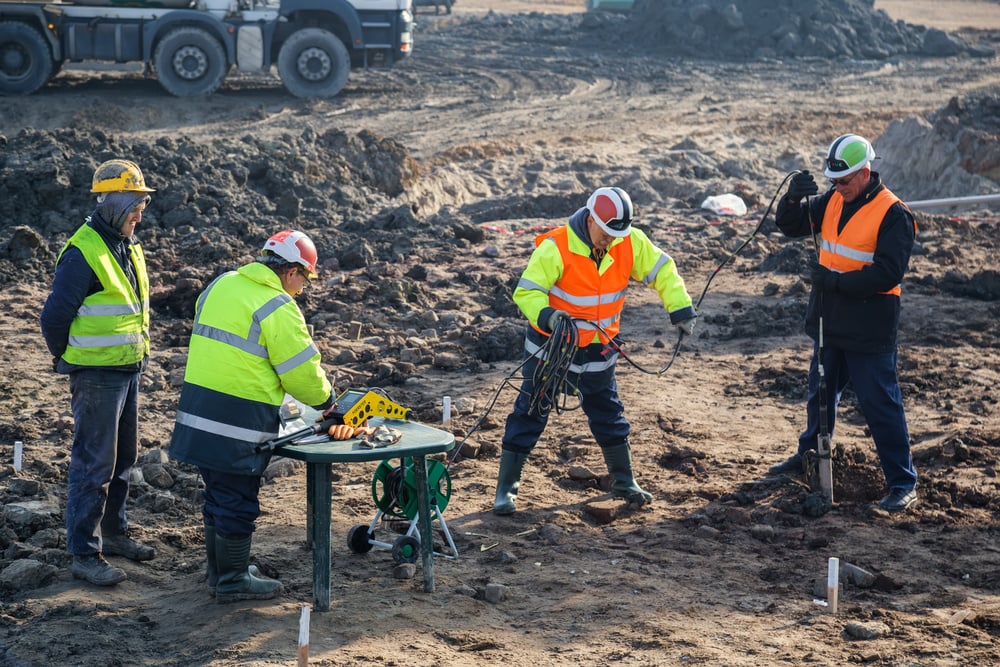The Basic Principles Of Specialized Geotechnical Engineering Solutions
Table of ContentsSpecialized Geotechnical Engineering Solutions Fundamentals ExplainedFascination About Specialized Geotechnical Engineering SolutionsSpecialized Geotechnical Engineering Solutions Fundamentals ExplainedGetting My Specialized Geotechnical Engineering Solutions To Work
They perform site investigations, gather examples, do lab tests, and analyze information to review the viability of the ground for building tasks. Based upon their searchings for, geotechnical engineers offer suggestions for structure style, incline security, maintaining structures, and mitigation of geotechnical hazards. They work together with other experts, such as designers, structural engineers, and building and construction teams, to guarantee that geotechnical considerations are integrated right into the total task style and implementation.
Foundation Layout: Geotechnical engineers play a crucial function in designing structures that can safely sustain the designated framework. They assess the soil problems and lots requirements to determine the ideal structure kind, such as superficial structures (e.g., footings), deep foundations (e.g., heaps), or specialized methods like soil enhancement. They think about variables such as settlement limitations, birthing ability, and soil-structure communication to establish optimum foundation styles.
Specialized Geotechnical Engineering Solutions Fundamentals Explained
Here are some kinds of geotechnical engineers: Structure Designer: Structure engineers concentrate on designing and evaluating foundations for structures - Specialized Geotechnical Engineering Solutions. They evaluate the soil problems, lots demands, and website features to figure out one of the most appropriate foundation type and design, such as shallow foundations, deep structures, or specialized methods like heap foundations
They do field screening, gather samples, and assess the gathered data to define the soil properties, geologic developments, and groundwater problems at a website. Geotechnical Instrumentation Designer: Geotechnical instrumentation engineers concentrate on surveillance and measuring the habits of dirt, rock, and structures. They install and preserve instrumentation systems that keep track of variables such as dirt negotiation, groundwater degrees, slope motions, and structural variations to assess efficiency and provide early cautions of possible concerns.
In the workplace setting, geotechnical engineers make use of specialized software tools to perform calculations, produce designs, and assess data. Specialized Geotechnical Engineering Solutions. They prepare records, testimonial task specifications, connect with clients and employee, and coordinate job activities. The workplace setting supplies a favorable environment for research, evaluation, and cooperation with other experts entailed in the project
They often check out job sites to conduct website investigations, examine geotechnical problems, and gather information for analysis. These sees include taking a trip to different locations, occasionally in remote or difficult surfaces. Geotechnical designers might perform soil sampling, conduct examinations, and display building and construction activities to guarantee that the geotechnical elements of the task are being applied correctly.
The 3-Minute Rule for Specialized Geotechnical Engineering Solutions
Geotechnical engineers additionally work in specialized geotechnical research laboratories. Geotechnical research laboratory designers function extensively in these environments, managing screening tools, running instruments, and tape-recording data.
Preserving Walls: Developing wall surfaces that keep back soil to stop landslides and offer security on sloped terrains. Embankments and Earthworks: Designing embankments for roadways, trains, and dams to guarantee they stay secure under stress. The mining industry counts greatly on geotechnical engineering to make certain the security and longevity of its procedures.
With this in mind, we have actually created our program to prepare trainees for success. The Geotechnical Engineering program description at the University of Delaware provides opportunities for innovative research and study in: Dirt and rock auto mechanics Soil-structure communication Constitutive modeling Computational Going Here geomechanics Structure and earth frameworks design Ground improvement Incline security and landslide stabilization Liquefaction of dirts and quake design Research laboratory characterization of geomaterials and dirt support Ecological geotechnics Given the strong demand for improvement to our country's infrastructurethe American Society of Civil Designers gave the U.S.
Geotechnical design is a branch of civil design; nonetheless, it includes using scientific approaches and principles to accumulate and analyze the physical residential or commercial properties of the ground. Geotechnical designers are entailed in all phases of the style of frameworks, from idea to building and construction. Their job is crucial in the layout and preparation procedure as they assess the stability of dirt, clay, silt, sand, and rock, prior to building and construction beginning.
Specialized Geotechnical Engineering Solutions - An Overview
This is followed by a ground examination based upon the findings of the workdesk research study and includes trial matching and tasting to reveal any possible problems. Geotechnical designers work within multidisciplinary groups, supported by intermediate and junior designers in addition to by CAD specialists. As a senior useful source geotechnical designer on a hydro plant task, tasks may include participating in technological testimonials (e.g., peer reviews), tailings clog inspections, dam safety and security reviews, and other research studies connected to the layout and building of mine waste centers.
While some professionals are experts entirely in geotechnics, others may work under titles like engineering geologist or ground designer within comparable capabilities. As a geotechnical engineer, you'll need to: construct and maintain connections with customers and other specialists associated with the website, throughout each projectmaintain safety and security standards on website bear in mind price implications when you make recommendationsstudy geological maps and airborne pictures from a range of resources and from various time periodsexamine construction plans to see exactly how viable they are based upon your understanding of the siteinvestigate risks or geological dangers for the sitesearch for ecologically delicate features, such as garbage dump begin to establish factual and expository ground modelsplan area investigationsdrill and analyse samples of bedrock, dirt, groundwater and additional products oversee other specialists on sitesolve technological issues as they emerge, such as unanticipated structures at drill sitesmonitor conditions throughout and after building and construction to make certain frameworks are steady in the brief and lengthy termadd data gathered on website to your preliminary researchcreate geotechnical computations, illustrations, and two or three-dimensional computer system models analyzing the datamake referrals about the suggested use the site.
There are great deals of chances to meet new people, as you'll collaborate with a variety of professionals at every website. The work can be stressful as you may be accountable for the safety of others while on website. There is likewise a high degree of financial obligation, as the suggestions you make can have significant cost implications.
